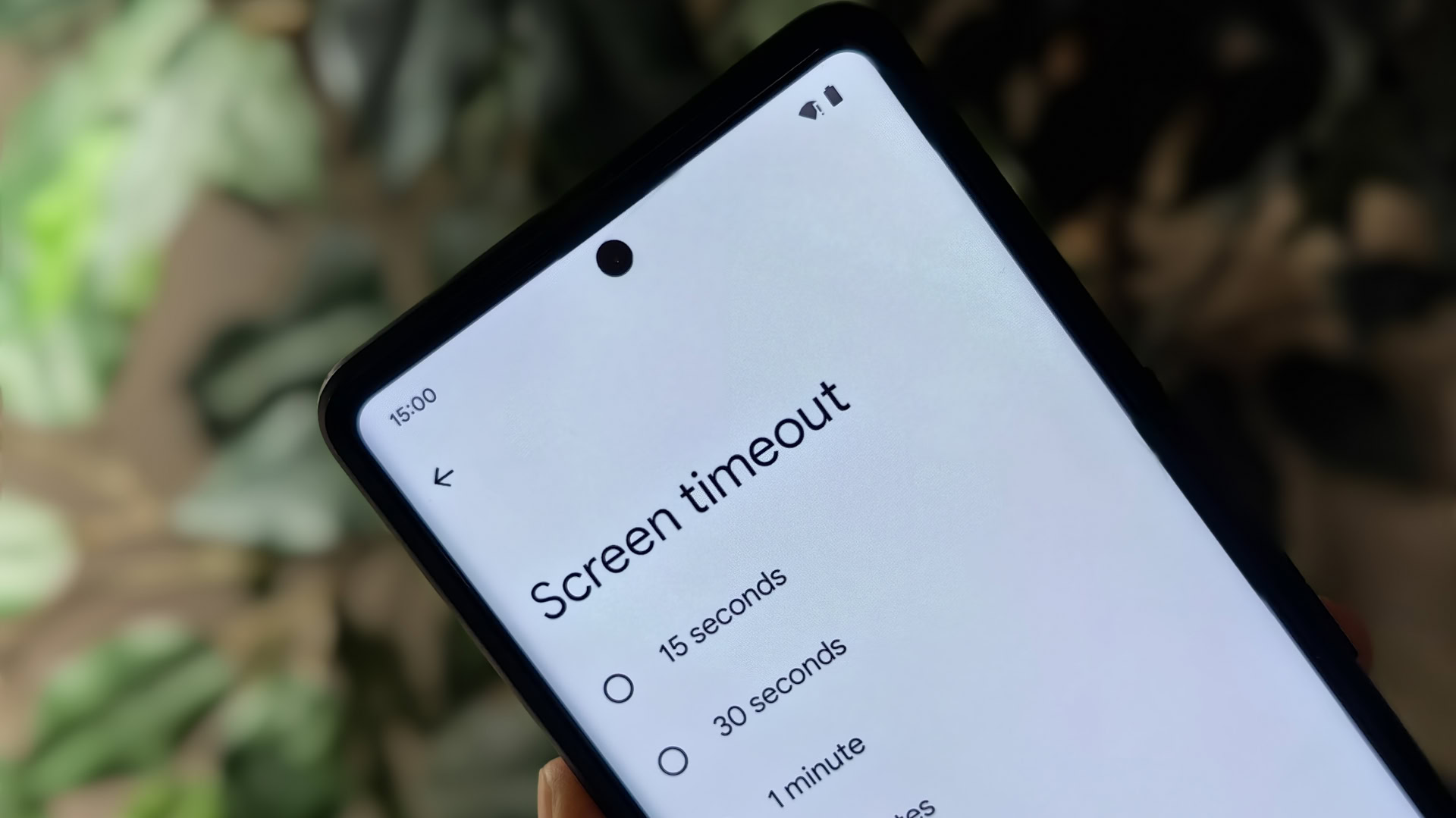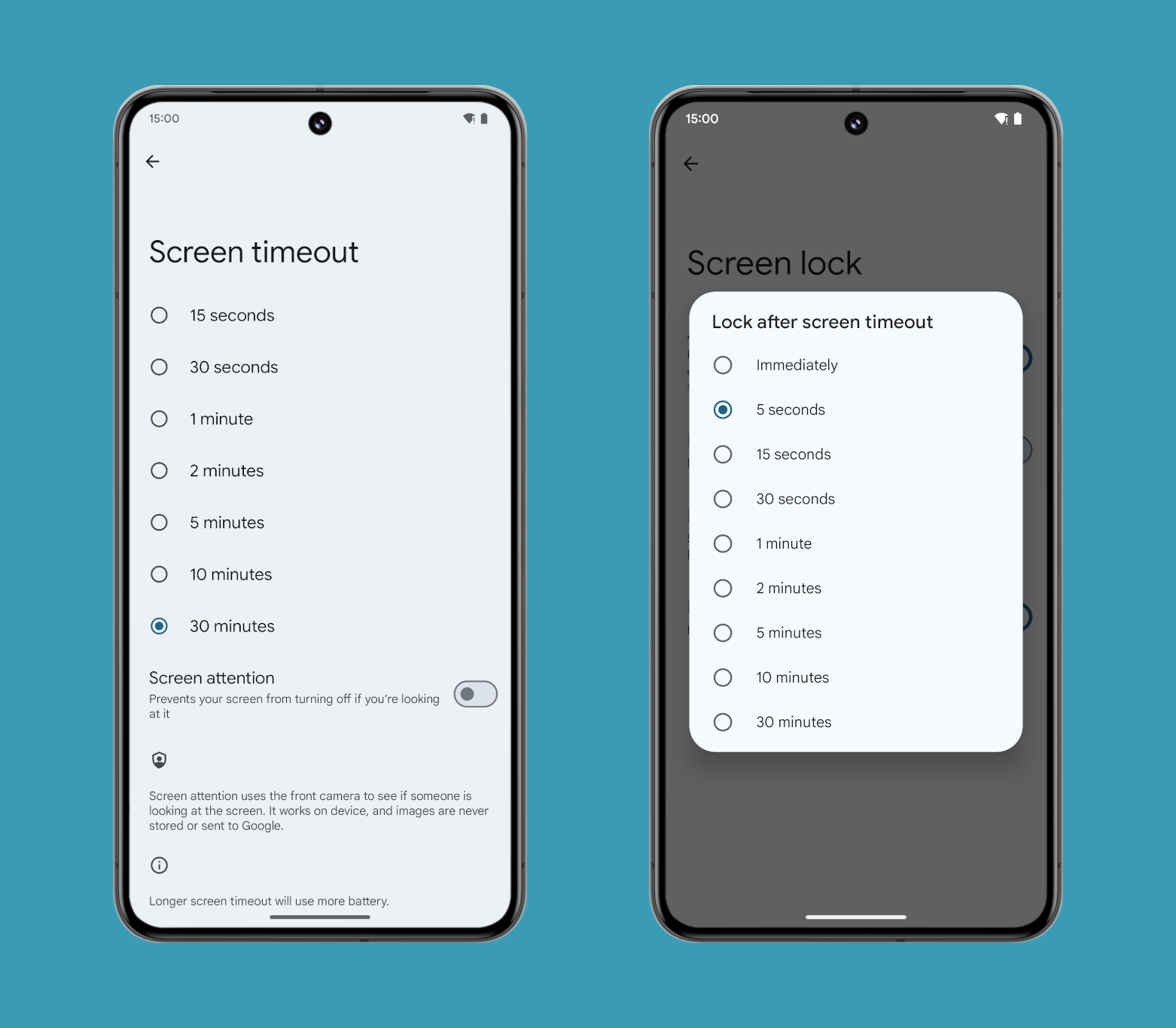Affiliate links on Android Authority may earn us a commission. Learn more.
Android 15 could help protect your data and extend battery life with adaptive timeout

- Android 15 may add an adaptive timeout option that automatically turns your device’s screen off when you aren’t using it.
- It’s important to lock your Android device when you aren’t using it so that nobody else can get access to your apps and data.
- Android’s screen timeout feature turns your device’s screen off and then locks it after a set period of time.
Google will release the next major version of the Android operating system, Android 15, sometime this fall, and we’ve already uncovered many of its new security and privacy features. These include a new Private Space for your sensitive apps, added protection from rogue “stingray” devices, better control over when your location is shared with cellular networks, automatic redaction of one-time passwords (OTPs) from notifications, and more. Given there are still four preview builds left before Android 15’s stable release, there are bound to be even more security features that haven’t been added or discovered yet. One such feature we’re expecting to see in an upcoming beta release is called adaptive timeout.
If you have a screen lock enabled on your device (and you really should), Android will automatically lock your device after a set period of time has passed. By default, Android turns the screen off after 30 seconds of inactivity and then locks the device after an additional five seconds has passed. These thresholds can be changed by going to Settings > Display > Screen timeout and Settings > Security & privacy > Device unlock > Screen lock settings, respectively.

If you’re doing something that requires keeping your device’s screen awake and unlocked but you can’t interact with it, then you can turn on the optional “screen attention” feature on select devices. This feature, which Google introduced with the Pixel 4 series, “prevents your screen from turning off if you’re looking at it.” It uses your device’s front-facing camera to see if someone is looking at the screen, so even if the screen is normally set to timeout after 30 seconds, it’ll stay awake so long as a face is detected in front of it.
While Android gives users the option of automatically extending how long their device’s screen stays on through the screen attention feature, the OS doesn’t offer a feature that does the opposite. In other words, Android doesn’t have a feature that can automatically shorten the time it takes for the screen to stay on. That’s set to change in Android 15 with the new adaptive timeout feature, though.
In the Android 15 Developer Preview 2 release, I spotted strings for a new “adaptive timeout” setting that “automatically turns off your screen early if you’re not using your device.” The feature’s description doesn’t state how the OS actually knows when you aren’t using your device, but it may use your device’s front-facing camera or other presence sensors to find out.
<string name="contextual_timeout_description">Automatically turns off your screen early if you’re not using your device</string>
<string name="contextual_timeout_title">Adaptive timeout</string>
These strings can be found in the settings app of Android 15 DP2, but the code referencing these strings belongs to classes under the com.google.* namespace. This suggests that the adaptive timeout feature won’t be part of the open-source version of Android (AOSP), but rather part of Google’s Android 15 builds for Pixel devices. This would make it similar to the screen attention feature, which also isn’t enabled in AOSP out of the box as it’s powered by Google’s Android System Intelligence app.
With adaptive timeout in Android 15, you can enjoy the benefits of an extended screen timeout without compromising significantly on security, as the OS will be able to intelligently turn your screen off (and then lock it) when you’re done using your device. This also has implications on battery life since longer screen timeouts mean the screen is on for longer, thus sucking up more battery.